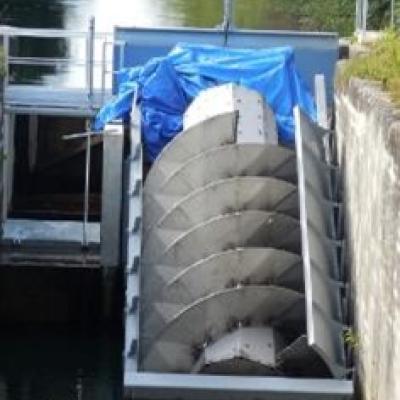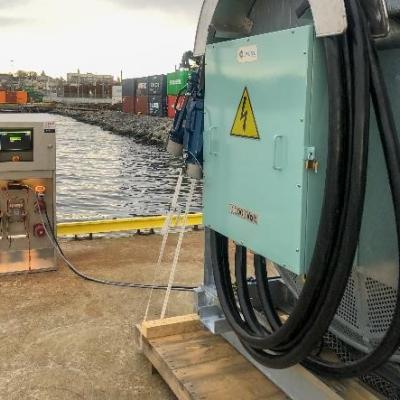This capacity can then be used and charged at times of green power surplus, to harmonize the pressure on energy grids of energy providers. Furthermore, an analysis of intelligent battery capacity construction and implementation for an optimal utilisation of battery capacity in ports will be undertaken. These activities then will illustrate what battery technology opportunities may accommodate regarding the electrification agenda of ports and with that look into a business case for future investments of this technology.
Port of Moss and Brittany Region will also investigate the utilisation of hydrogen solutions and how the project activities help the two partners to move forward in those two areas.
To further foster the implementation of shore-side electricity facilities in ports, the Port of Skagen will outline possibilities of low operational- and construction costs of shore power systems. Focus here will also lie on the fully flexibility of the solution towards supplying variable currents and frequencies, through a mobile unit that may be moved along the quay by truck.
This mobile option is needed for fossil free shipping, as there is a high loss of energy in the production of e-fuels, making these fuels relevant for the transition but also very inefficient because of the high loss of energy during its production.
The system will feature five shore power connection points, each placed with a distance of 100 meters between them, with flexible mobile shore power unit being able to connect to the grid. Through this layout, the mobile unit can be connected to the grid from two connection points, doubling the power capabilities. The power output can vary between 400 – 690 V, with a variable frequency of 50 to 60 Hz. This will be a huge improvement, compared to the current need to use fossil diesel and the CO2, NOx and noise pollution coming with that. The expected reduction of CO2 emissions in Port of Skagen alone are estimated to be more than 300 tons per year.
Just like the project partners Korsør and Moss, the Port of Brussels will implement too shore-side electricity facilities. However, Port of Brussels will also develop another green power generating technology. Brussels will also investigate the use hydropower turbines to produce energy in locks on inland waterways. An innovative solution to produce green energy. Therefore, a study on the technical feasibility and economic opportunity of acquiring hydroelectric power generation capacity will be carried out in the first half of the project lifetime. The basis for the analysis are two locks in the Port of Brussels that may be able to create sufficient flow to power turbines that produce renewable electricity to be consumed for the operation of the locks, but also injected into the distribution network of the energy community. However, the study will also assess the hydroelectric potential of the entire part of the canal managed by Port of Brussels. The installation of the hydropower turbine will then take place in the second half of the project lifetime.
Workshops with relevant stakeholders, social media, websites of the partners and media outlets will be used to communicate about the progress of this pilot accordingly.
For more details, please contact:
Jesper K. Rulffs, or Mikal Nielsen from Port of Skagen
Øystein H Sundby, or Eirik Olsson from Port of Moss


